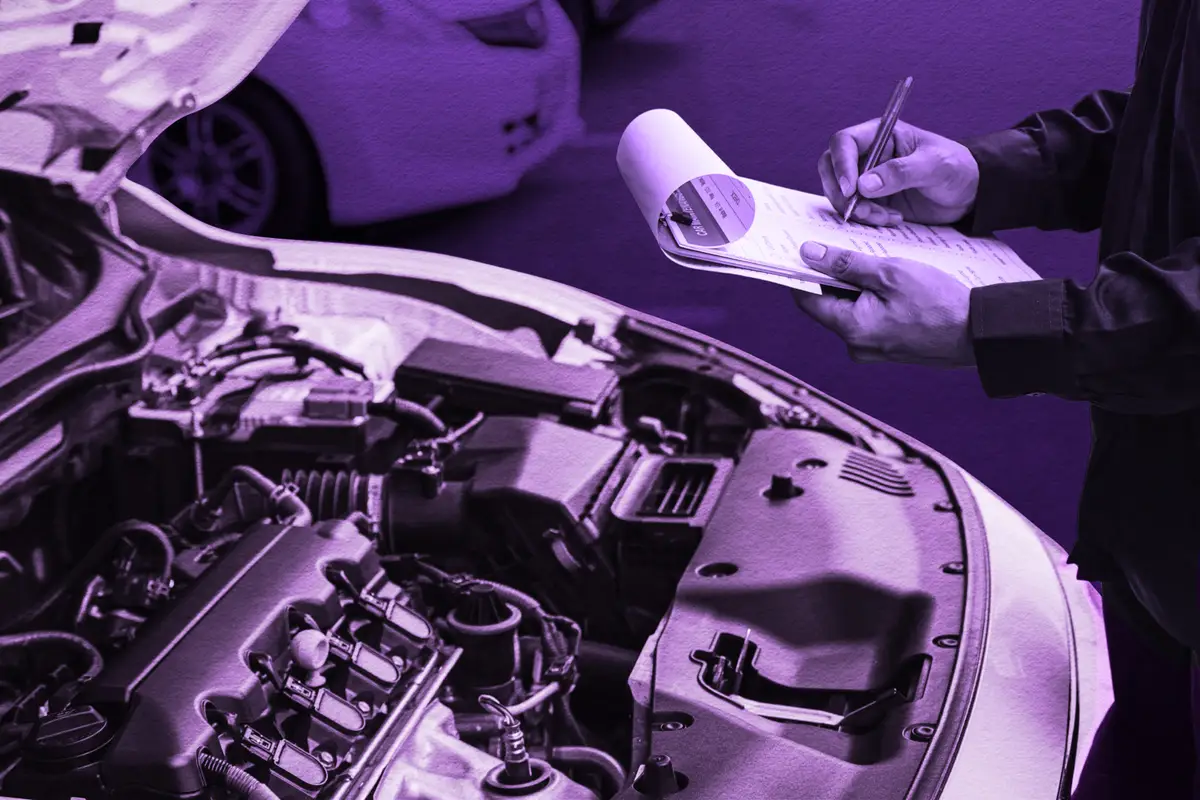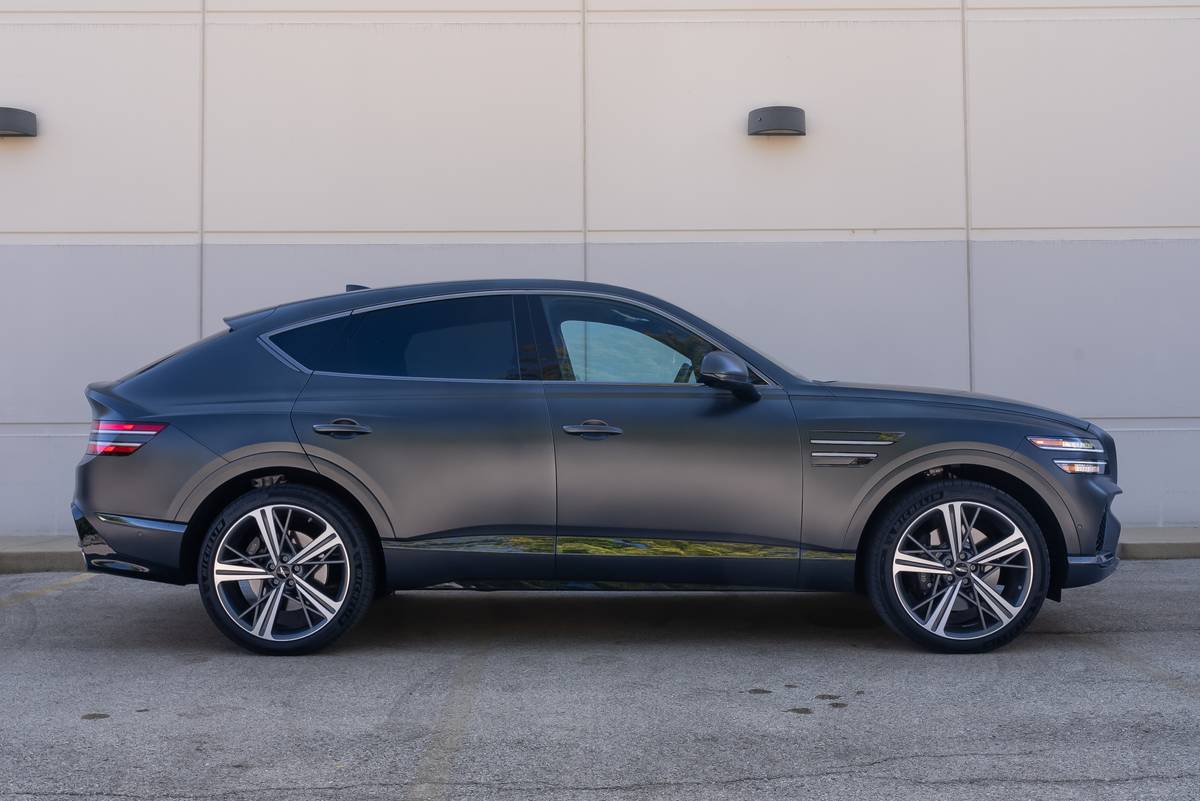Cincinnati.com's view
Do you know what a differential is?
You’ve probably heard the term, here, if not in a more reputable spot, but here’s a quick refresher in case the details are foggy.
A differential is a gearset located on a vehicle between the wheels on a common axle. Its purpose is to let one wheel rotate faster than the other in turns.
Think of a hard left turn. The left, or inside wheel is following a rather tight arc, while the outside wheel has much farther to go. (Not to worry, we’re not going to get into Pi today.)
If the two wheels were connected directly, via a solid axle, the inside tire would scrub like an eraser on concrete while the outside wheel rolled along. The differential lets them go at the same angular speed while moving at different linear speeds.
Okay? Next chapter. Envision now what happens in the same turn, but this time, in terms of what’s going on at the front and rear axles. The front wheels are turned sharply, while the rear wheels turn imperceptibly, if at all. So the rears are in effect being scrubbed along the pavement except insofar as the elasticity of the tires lets them “give” a bit. (This is one reason for periodic tire rotation.)
The wonder is that it works so well, especially on vehicles with longer wheelbases. (Notice how deliberately stretch limos approach turns.)
The extreme case is the firefighter’s ladder wagon. Here, there’s a tiller person who controls the rearmost wheels in a turn to allow the vehicles to negotiate curves they otherwise couldn’t.
What would happen if this principle were applied to a consumer vehicle? I’m here to tell you, because this week’s guest is a GMC Sierra Denali fullsize pickup with Quadrasteer, the first-ever application of rear-wheel-steering technology to a consumer truck. (It has been done on cars, but never caught on, the complexity outweighing the advantages.)
The Denali (name borrowed from the park and mountain in Alaska) is the pride of GM’s “light-duty” (their term) fleet. It was formerly known as the C3. It is the only one on which you can get Quadrasteer, and it comes fully loaded, which in this case includes full-time all-wheel drive and the largest available engine, in addition to such fillips as alloy wheels, OnStar communications system, HomeLink transmitter, leather seating with power lumbar support, and on and on, through all the amenities you might expect on a luxury car.
It’s configured as an extended-cab (two-door), short bed truck, capable of carrying 1,722 pounds or towing up to 10,000 pounds.
The Sierra Denali has a wheelbase of 143 inches and is a hair over 227 inches overall, and thus can use a bit of help negotiating turns.
The Quadrasteer mechanism can be turned on or off via a dash-mounted switch with iconic readout.
Sensors up front determine the amount the front wheels are turned. At speeds under 40 mph, the rear wheels are turned opposite the fronts, while in excess of 40 mph they t urn in the same direction. The rear wheels are steered automatically via electric motors. The system works silently, with no driver intervention, just as the all-wheel-drive mechanism does.
After trying it out, I had no desire to turn it off. Its impact was enormous. In ordinary driving, the Denali handles like a well-set-up car, albeit a hefty car. Even on narrow, twisting country roads it was a pleasure to drive, once the capability of Quadrasteer had sunk in.
The most profound difference in perception, however, came in my downtown parking garage, engineered to maximize the floor space available, with tight turns and narrow lanes.
The turning radius of the Denali with the Q factor is 37.4 feet, a few inches more than a Saturn coupe’s. Without Q, it’s 46.2 feet. For comparison, the numbers for main competitors: Dodge Ram, 52.3 feet; Ford F-150, 50.4 feet. Imagine not having to avoid shopping malls!
In addition to the length mentioned above, there’s also the factor of width to consider. Because of its rear track being five inches wider than its prosaic counterparts’, and the extra clearance required for its turning rear wheels, the Denali boasts a total width of 83.5 inches at its widest point, making it a bit of a lane hog. At least the fenders are of polymer construction, to lessen dings from neighboring mall-hoppers.
The Quadrasteer system is also said to make towing a great deal more relaxed, especially in lane-change maneuvers.
Base curb weight of the Denali approaches 5,500 pounds. Considering the hauling chores it might be assigned, it needs some serious grunt, and gets it in the form of a six-liter, overhead-valve V-8 gas engine. Running on regular fuel, albeit in tanker loads, it delivers 325 hp and 370 foot-pounds of torque, a bit more output than GM wrings from the same engine in the lesser full-size pickup configurations.
With no more than a few hundred pounds’ worth of garden materials in the back and the usual ballast behind the wheel, the Denali scooted like a sports sedan. In some hard running and some easy cruising, I racked up an overall figure of 14.2 mpg. EPA’s estimates are 12 mpg city, 15 highway, though of course having a couple of horses or a yacht out back would put the lie to those numbers.
Not unexpectedly, the ride was rather bouncy with a light load, but harshness suppression was good, and the truck felt solid going over really nasty pavement breaks.
The driver’s seat was an enjoyable place to be, with power assists for fore and aft, up and down, side bolsters and a wide-ranging lumbar support. With a step-up height of 21 inches, it wasn’t like mountain climbing, but the standard tubular side steps were for once a welcome addition.
Gauges were well-placed and legible, with the usual ones augmented by readouts for voltage and transmission temperature, a nice feature when towing is an essential function. There’s a bright readout of gear selection. Inhibiting overdrive fourth requires pulling the column-mounted shifter down to 3, since the preferred position, the end of the lever, is taken up by a towing-mode switch for the automatic transmission. It delays upshifts and causes more assertive changes when there’s a load behind.
The rear compartment would be rather snug, though livable, for full-sized folks. It would serve well for the pint-sized. The aft portals – hatches rather than doors – can be opened wide with a lever inside the front door jamb.
The stereo was unexpectedly good. An AM-FM-cassette-6-CD rig, it had excellent tuner sensitivity and clarity, though presence was somewhat lacking.
A soft, body-colored tonneau cover is provided. It snaps in place easily and is kept rigid via three bowed, spring-loaded cross ribs. The bed is wide enough to accommodate 4×8 sheets of building supplies.
The Feds haven’t smashed a Sierra, but the Insurance Institute for Highway Safety has. They rated it (and its Chevy analogue, Silverado) only marginal. They thought the “dummy kinematics” and safety cage protection were poor. The Sierra has dual front air bags only.
To keep from needing them, you get four-wheel disc brakes with antilock. The antilock’s activation was nearly imperceptible, and it kept the wheels from locking up in simulated panic stops. Neither stopping distance nor the mushy pedal feel inspired great confidence, however.
Sierras are made at three plants: Oshawa, Ontario, whence came the sacrificial vehicle; Pontiac, Mich., and Fort Wayne. Fit and finish were very good.
There were no options on the tester, so final suggested price, with freight, was $44,205. Payments at that price would be $896, assuming 20 percent down, 10 percent interest and 48 installments. Edmunds.com transaction surveys indicate most folks are paying about $40 grand for this machine, thanks to the competitiveness in the segment.
“The Gannett News Service”
Latest news


10 Biggest News Stories of the Week: Jeep Wrangler Rides on Audi E-Tron GT, Chrysler Pacifica Hybrid

